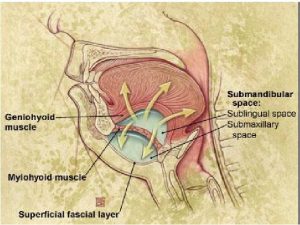While at a friend’s dental office the other day I was stopped by one of his assistants whom I did not recognize right away but had been in my office on emergency about 15 years ago when her regular dentist was away. After I realized who she was and we exchanged pleasantries she said, “Dr. Sorrentino, I want to thank you for saving my life.” I looked dumbfounded. No one had ever said that to me. When I asked her, “Monica, how?” She said that she was planning to wait for her dentist to come back but at my urging she went to see an oral surgeon and have the (deeply impacted) offending tooth removed that day. I had told her that waiting on something like this could lead to a long hospitalization or even death. The surgeon told her waiting overnight would have landed her in the hospital.
I remember vividly getting a call from her regular dentist asking why I had frightened her patient by saying she was at risk of dying. I said it does not happen often but that there are two things in dentistry that are important to treat immediately as they do have the potential to kill you. One is something called cavernous sinus thrombosis. The other is called Ludwig’s angina. Let’s review them.
Cavernous sinus thrombosis is the formation of a blood clot within the cavernous sinus, a cavity at the base of the brain. It drains deoxygenated blood from the brain back to the heart. The cause is usually from a spreading infection in the nose, sinuses, ears, or teeth. The symptoms can include: decrease or loss of vision, bulging eyes, headaches, and paralysis of the cranial nerves which course through the cavernous sinus. This infection is life-threatening and untreated can be fatal. While, as I stated above, it does have other causes an abscessed upper canine is the usual dental culprit. Canine teeth have the longest roots of any teeth in your mouth. The upper canine is situated such that the tip of the root is very close to the sinuses. An infection from this tooth can allow bacteria from your mouth to “ascend” up the sinus pathway to the base of the brain where it can form a blood clot and lead to death. No surprise that this is called an ascending infection.
Ludwig’s angina is a descending cellulitus, usually caused by a lower third molar. This was my concern for Monica. The root of the lower third molar is set far back in the jaw. If it gets infected the bacteria can spread down the root and into what is called the submandibular space and can keep moving south from there. The infection expands, compressed the trachea and you basically suffocate. Not only can it happen fast but the infection can start in the gum, no tooth decay required on this one.
I do not usually think of dentistry as life or death. Every few years though there is a news story about it happening, thought. Here is another example. The point is you don’t always know the repercussions of what you do until years later. Being told I saved someone’s life is a memory I will never forget.


